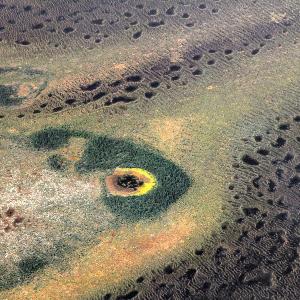New tools for climate monitoring
19 Sept 2022
Equipped with novel instruments, research flights over Canada are furnishing data about the emission of greenhouse gases. LMU physicists are playing a major role in the surveys.
19 Sept 2022
Equipped with novel instruments, research flights over Canada are furnishing data about the emission of greenhouse gases. LMU physicists are playing a major role in the surveys.

The Hudson Bay Lowlands are the second-largest wetlands in the northern hemisphere. How large are the area’s methane emissions? | © DLR
Coal mining, oil and gas production, landfills, agriculture – all these things are anthropogenic sources of methane (CH4), the greenhouse gas which is the second-strongest driver of climate change after carbon dioxide (CO2). In fact, a molecule of methane is up to 86 times stronger in its climate impacts than a molecule of CO2. Moreover, large wetlands and thawing permafrost are among the most important but least well understood natural sources and sinks in the global CH4 and CO2 budget. Finding out more precisely how much these sources emit individually and how analyses can better distinguish what is of natural origin and what is man-made is the mission of the German research aircraft HALO currently flying over Canada. The German Aerospace Center (DLR) is carrying out this research as part of the CoMet 2.0 Arctic (Carbon Dioxide and Methane Mission for HALO) program. Alongside teams from the DLR itself, the Max Planck Institute for Biogeochemistry in Jena, and the University of Bremen, a team led by Prof. Bernhard Mayer, atmospheric researcher in the Faculty of Physics at LMU, is playing a key role. Together, the partners are investigating how to measure greenhouse gas emissions more precisely and comprehensively in future and make more accurate climate forecasts.
The CoMet 2.0 mission will go a long way toward providing new tools for climate monitoring and improving the data foundations for future climate change policy decisions. In the course of the mission, novel instruments will be tested for the recording of greenhouse gases, including LMU’s specMACS. Offering high spatial and spectral resolution, this spectrometer characterizes the reflectivity of the ground and allows precise detection of the clouds that disrupt remote methane sensing.